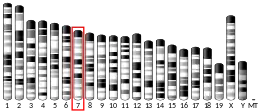| PTH2 | |||||||||||||||||||||||||||||||||||||||||||||||||||
|---|---|---|---|---|---|---|---|---|---|---|---|---|---|---|---|---|---|---|---|---|---|---|---|---|---|---|---|---|---|---|---|---|---|---|---|---|---|---|---|---|---|---|---|---|---|---|---|---|---|---|---|
| Identifiers | |||||||||||||||||||||||||||||||||||||||||||||||||||
| Aliases | PTH2, TIP39, parathyroid hormone 2 | ||||||||||||||||||||||||||||||||||||||||||||||||||
| External IDs | OMIM: 608386 MGI: 2152297 HomoloGene: 14235 GeneCards: PTH2 | ||||||||||||||||||||||||||||||||||||||||||||||||||
| |||||||||||||||||||||||||||||||||||||||||||||||||||
| |||||||||||||||||||||||||||||||||||||||||||||||||||
| |||||||||||||||||||||||||||||||||||||||||||||||||||
| |||||||||||||||||||||||||||||||||||||||||||||||||||
| Wikidata | |||||||||||||||||||||||||||||||||||||||||||||||||||
| |||||||||||||||||||||||||||||||||||||||||||||||||||
Tuberoinfundibular peptide of 39 residues is a protein that in humans is encoded by the PTH2 gene.[5][6]
TIP39 is related to parathyroid hormone (PTH; MIM 168450) and PTH-related protein (PTHRP; MIM 168470) and is a ligand for PTH receptor-2 (PTHR2; MIM 601469) (John et al., 2002).[supplied by OMIM][6]
The molecular interaction of TIP39 with the PTH2 receptor has been characterized in full 3D molecular detail, identifying among other residues, Tyr-318 in transmembrane helix 5 as a key residue for high affinity binding [7]
Expression of TIP39 has been linked to social interaction in both zebrafish [8] and rats.[9] In these species, mutations of TIP39 or its receptor lead to abnormal social behavior.[10][11]
References
- 1 2 3 GRCh38: Ensembl release 89: ENSG00000142538 - Ensembl, May 2017
- 1 2 3 GRCm38: Ensembl release 89: ENSMUSG00000038300 - Ensembl, May 2017
- ↑ "Human PubMed Reference:". National Center for Biotechnology Information, U.S. National Library of Medicine.
- ↑ "Mouse PubMed Reference:". National Center for Biotechnology Information, U.S. National Library of Medicine.
- ↑ John MR, Arai M, Rubin DA, Jonsson KB, Juppner H (Feb 2002). "Identification and characterization of the murine and human gene encoding the tuberoinfundibular peptide of 39 residues". Endocrinology. 143 (3): 1047–57. doi:10.1210/endo.143.3.8698. PMID 11861531.
- 1 2 "Entrez Gene: TIP39 tuberoinfundibular 39 residue protein precursor".
- ↑ Weaver RE, Mobarec JC, Wigglesworth MJ, Reynolds CA, Donnelly D (2017). "High affinity binding of the peptide agonist TIP-39 to the Parathyroid hormone 2 (PTH2) receptor requires the hydroxyl group of Tyr-318 on transmembrane helix 5". Biochemical Pharmacology. 127: 71–81. doi:10.1016/j.bcp.2016.12.013. PMC 5303546. PMID 28012961.
- ↑ Anneser L, Alcantara I, Gemmer A, Mirkes K, Ryu S, Schuman EM (2020). "The neuropeptide Pth2 dynamically senses others via mechanosensation". Nature. 588 (7839): 653–657. doi:10.1038/s41586-020-2988-z. hdl:10871/123941. PMID 33268890.
- ↑ Keller D, Láng T, Cservenák M, Puska G, Barna J, Csillag V, Farkas I, Zelena D, Dóra F, Küppers S, Barteczko L, Usdin TB, Palkovits M, Hasan MT, Grinevich V, Dobolyi A (2022). "A thalamo-preoptic pathway promotes social grooming in rodents". Current Biology. 32 (21): 4593–4606. doi:10.1016/j.cub.2022.08.062. PMID 36113471.
- ↑ Anneser L, Gemmer A, Eilers T, Alcantara I, Loos AY, Ryu S, Schuman EM (2022). "The neuropeptide Pth2 modulates social behavior and anxiety in zebrafish". iScience. 25 (3): 103868. doi:10.1016/j.isci.2022.103868. PMC 8861652. PMID 35243231.
- ↑ Gellén B, Zelena D, Usdin TB, Dobolyi A (2017). "The parathyroid hormone 2 receptor participates in physiological and behavioral alterations of mother mice". Physiology and Behavior. 181: 51–58. doi:10.1016/j.physbeh.2017.09.005. PMID 28890271. S2CID 40314841.
Further reading
- Usdin TB, Hoare SR, Wang T, et al. (1999). "TIP39: a new neuropeptide and PTH2-receptor agonist from hypothalamus". Nat. Neurosci. 2 (11): 941–3. doi:10.1038/14724. PMID 10526330. S2CID 22744817.
- Hoare SR, Clark JA, Usdin TB (2000). "Molecular determinants of tuberoinfundibular peptide of 39 residues (TIP39) selectivity for the parathyroid hormone-2 (PTH2) receptor. N-terminal truncation of TIP39 reverses PTH2 receptor/PTH1 receptor binding selectivity". J. Biol. Chem. 275 (35): 27274–83. doi:10.1074/jbc.M003910200. PMID 10854439.
- Dobolyi A, Ueda H, Uchida H, et al. (2002). "Anatomical and physiological evidence for involvement of tuberoinfundibular peptide of 39 residues in nociception". Proc. Natl. Acad. Sci. U.S.A. 99 (3): 1651–6. Bibcode:2002PNAS...99.1651D. doi:10.1073/pnas.042416199. PMC 122245. PMID 11818570.
- Hansen IA, Jakob O, Wortmann S, et al. (2002). "Characterization of the human and mouse genes encoding the tuberoinfundibular peptide of 39 residues, a ligand of the parathyroid hormone receptor family". J. Endocrinol. 174 (1): 95–102. doi:10.1677/joe.0.1740095. PMID 12098667.
- Strausberg RL, Feingold EA, Grouse LH, et al. (2003). "Generation and initial analysis of more than 15,000 full-length human and mouse cDNA sequences". Proc. Natl. Acad. Sci. U.S.A. 99 (26): 16899–903. Bibcode:2002PNAS...9916899M. doi:10.1073/pnas.242603899. PMC 139241. PMID 12477932.
- Della Penna K, Kinose F, Sun H, et al. (2003). "Tuberoinfundibular peptide of 39 residues (TIP39): molecular structure and activity for parathyroid hormone 2 receptor". Neuropharmacology. 44 (1): 141–53. doi:10.1016/S0028-3908(02)00335-0. PMID 12559132. S2CID 9974844.
- Misiano P, Scott BB, Scheideler MA, Garnier M (2004). "PTH2 receptor-mediated inhibitory effect of parathyroid hormone and TIP39 on cell proliferation". Eur. J. Pharmacol. 468 (3): 159–66. doi:10.1016/S0014-2999(03)01673-X. PMID 12754053.
- Bisello A, Manen D, Pierroz DD, et al. (2004). "Agonist-specific regulation of parathyroid hormone (PTH) receptor type 2 activity: structural and functional analysis of PTH- and tuberoinfundibular peptide (TIP) 39-stimulated desensitization and internalization". Mol. Endocrinol. 18 (6): 1486–98. doi:10.1210/me.2003-0487. PMID 14988434.
- Gerhard DS, Wagner L, Feingold EA, et al. (2004). "The status, quality, and expansion of the NIH full-length cDNA project: the Mammalian Gene Collection (MGC)". Genome Res. 14 (10B): 2121–7. doi:10.1101/gr.2596504. PMC 528928. PMID 15489334.
This article is issued from Wikipedia. The text is licensed under Creative Commons - Attribution - Sharealike. Additional terms may apply for the media files.



